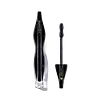What's inside
What's inside
 Key Ingredients
Key Ingredients

 Benefits
Benefits

 Concerns
Concerns

 Ingredients Side-by-side
Ingredients Side-by-side

Water
Skin ConditioningAcrylates/Ethylhexyl Acrylate Copolymer
Alcohol Denat.
AntimicrobialGlyceryl Stearate Se
EmulsifyingGlycerin
HumectantDimethicone
EmollientVp/Eicosene Copolymer
Copernicia Cerifera Cera
EmollientStearic Acid
CleansingButyrospermum Parkii Butter
Skin ConditioningRicinus Communis Seed Oil
MaskingTromethamine
BufferingPalmitic Acid
EmollientPhenoxyethanol
PreservativeLaureth-21
CleansingPvp
Emulsion StabilisingXanthan Gum
EmulsifyingSodium Dehydroacetate
PreservativeMethylglucamine
Ethylhexylglycerin
Skin ConditioningTrisodium Ethylenediamine Disuccinate
Panthenol
Skin ConditioningNeofinetia Falcata Callus Culture Extract
Skin ConditioningSodium Hyaluronate
HumectantLecithin
EmollientIron Oxides
Water, Acrylates/Ethylhexyl Acrylate Copolymer, Alcohol Denat., Glyceryl Stearate Se, Glycerin, Dimethicone, Vp/Eicosene Copolymer, Copernicia Cerifera Cera, Stearic Acid, Butyrospermum Parkii Butter, Ricinus Communis Seed Oil, Tromethamine, Palmitic Acid, Phenoxyethanol, Laureth-21, Pvp, Xanthan Gum, Sodium Dehydroacetate, Methylglucamine, Ethylhexylglycerin, Trisodium Ethylenediamine Disuccinate, Panthenol, Neofinetia Falcata Callus Culture Extract, Sodium Hyaluronate, Lecithin, Iron Oxides
Water
Skin ConditioningCI 77499
Cosmetic ColorantStyrene/Acrylates/Ammonium Methacrylate Copolymer
Butyrospermum Parkii Butter
Skin ConditioningPropylene Glycol
HumectantGlyceryl Stearate
EmollientDimethicone
EmollientPolybutene
PEG-100 Stearate
Behenyl Alcohol
EmollientSorbitol/Sebacic Acid Copolymer Behenate
Skin ConditioningDivinyldimethicone/Dimethicone Copolymer
Cetearyl Alcohol
EmollientAspartic Acid
MaskingTribehenin
EmollientGlycerin
HumectantGlyceryl Behenate
EmollientGlyceryl Dibehenate
EmollientGlyceryl Stearate Citrate
EmollientDimethicone/Vinyl Dimethicone Crosspolymer
Skin ConditioningDimethiconol
EmollientThreonine
Sodium Laureth Sulfate
CleansingArginine
MaskingSerine
MaskingProline
Skin ConditioningAlanine
MaskingAmmonium Polyacryloyldimethyl Taurate
Emulsion StabilisingDisodium EDTA
Disodium Ethylene Dicocamide PEG-15 Disulfate
CleansingCaprylyl Glycol
EmollientTetrasodium EDTA
Citric Acid
BufferingXanthan Gum
EmulsifyingCysteine
AntioxidantGlutamic Acid
HumectantEthylhexylglycerin
Skin ConditioningButylene Glycol
HumectantC12-13 Pareth-23
CleansingC12-13 Pareth-3
EmulsifyingTocopherol
AntioxidantTocopheryl Acetate
AntioxidantPotassium Sorbate
PreservativePhenoxyethanol
PreservativeParfum
MaskingWater, CI 77499, Styrene/Acrylates/Ammonium Methacrylate Copolymer, Butyrospermum Parkii Butter, Propylene Glycol, Glyceryl Stearate, Dimethicone, Polybutene, PEG-100 Stearate, Behenyl Alcohol, Sorbitol/Sebacic Acid Copolymer Behenate, Divinyldimethicone/Dimethicone Copolymer, Cetearyl Alcohol, Aspartic Acid, Tribehenin, Glycerin, Glyceryl Behenate, Glyceryl Dibehenate, Glyceryl Stearate Citrate, Dimethicone/Vinyl Dimethicone Crosspolymer, Dimethiconol, Threonine, Sodium Laureth Sulfate, Arginine, Serine, Proline, Alanine, Ammonium Polyacryloyldimethyl Taurate, Disodium EDTA, Disodium Ethylene Dicocamide PEG-15 Disulfate, Caprylyl Glycol, Tetrasodium EDTA, Citric Acid, Xanthan Gum, Cysteine, Glutamic Acid, Ethylhexylglycerin, Butylene Glycol, C12-13 Pareth-23, C12-13 Pareth-3, Tocopherol, Tocopheryl Acetate, Potassium Sorbate, Phenoxyethanol, Parfum
Ingredients Explained
These ingredients are found in both products.
Ingredients higher up in an ingredient list are typically present in a larger amount.
This ingredient is also known as shea butter. It is an effective skin hydrator and emollient.
Emollients help soothe and soften your skin. It does this by creating a protective film on your skin. This barrier helps trap moisture and keeps your skin hydrated. Emollients may be effective at treating dry or itchy skin.
Shea butter is rich in antioxidants. Antioxidants help fight free-radicals, or molecules that may harm the body. It is also full of fatty acids including stearic acid and linoleic acid. These acids help replenish the skin and keep skin moisturized.
While Shea Butter has an SPF rating of about 3-4, it is not a sunscreen replacement.
Shea butter may not be fungal acne safe. We recommend speaking with a professional if you have any concerns.
Learn more about Butyrospermum Parkii ButterDimethicone is a type of synthetic silicone created from natural materials such as quartz.
What it does:
Dimethicone comes in different viscosities:
Depending on the viscosity, dimethicone has different properties.
Ingredients lists don't always show which type is used, so we recommend reaching out to the brand if you have questions about the viscosity.
This ingredient is unlikely to cause irritation because it does not get absorbed into skin. However, people with silicone allergies should be careful about using this ingredient.
Note: Dimethicone may contribute to pilling. This is because it is not oil or water soluble, so pilling may occur when layered with products. When mixed with heavy oils in a formula, the outcome is also quite greasy.
Learn more about DimethiconeEthylhexylglycerin (we can't pronounce this either) is commonly used as a preservative and skin softener. It is derived from glyceryl.
You might see Ethylhexylglycerin often paired with other preservatives such as phenoxyethanol. Ethylhexylglycerin has been found to increase the effectiveness of these other preservatives.
Glycerin is already naturally found in your skin. It helps moisturize and protect your skin.
A study from 2016 found glycerin to be more effective as a humectant than AHAs and hyaluronic acid.
As a humectant, it helps the skin stay hydrated by pulling moisture to your skin. The low molecular weight of glycerin allows it to pull moisture into the deeper layers of your skin.
Hydrated skin improves your skin barrier; Your skin barrier helps protect against irritants and bacteria.
Glycerin has also been found to have antimicrobial and antiviral properties. Due to these properties, glycerin is often used in wound and burn treatments.
In cosmetics, glycerin is usually derived from plants such as soybean or palm. However, it can also be sourced from animals, such as tallow or animal fat.
This ingredient is organic, colorless, odorless, and non-toxic.
Glycerin is the name for this ingredient in American English. British English uses Glycerol/Glycerine.
Learn more about GlycerinPhenoxyethanol is a preservative that has germicide, antimicrobial, and aromatic properties. Studies show that phenoxyethanol can prevent microbial growth. By itself, it has a scent that is similar to that of a rose.
It's often used in formulations along with Caprylyl Glycol to preserve the shelf life of products.
Water. It's the most common cosmetic ingredient of all. You'll usually see it at the top of ingredient lists, meaning that it makes up the largest part of the product.
So why is it so popular? Water most often acts as a solvent - this means that it helps dissolve other ingredients into the formulation.
You'll also recognize water as that liquid we all need to stay alive. If you see this, drink a glass of water. Stay hydrated!
Learn more about WaterXanthan gum is used as a stabilizer and thickener within cosmetic products. It helps give products a sticky, thick feeling - preventing them from being too runny.
On the technical side of things, xanthan gum is a polysaccharide - a combination consisting of multiple sugar molecules bonded together.
Xanthan gum is a pretty common and great ingredient. It is a natural, non-toxic, non-irritating ingredient that is also commonly used in food products.
Learn more about Xanthan Gum